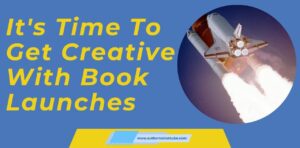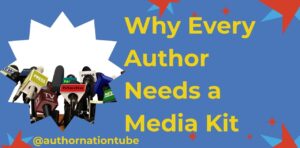If your writing is packed with powerful insights, but your readers still tune out, you’re not alone. The truth is data doesn’t engage.
Why Data Alone Doesn’t Engage Readers
Problem number one: your data are right, but your readers don’t care.
When you’re writing something meaningful, maybe even world-changing, but the audience skims, smiles, nods, and closes the book — it’s a classic case of data not engaging because the emotional connection isn’t there. Emotional connection isn’t found in numbers alone. Read the following piece to discover what happens when you start with story not stats.
Let’s look at the book Factfulness by Hans Rosling. If you haven’t seen his TED Talk, I’ll drop the link for you. He’s a data guy, but he doesn’t lead with numbers. He leads with stories. He immerses you into his classroom, creating curiosity and emotional engagement first — and then introduces the data.
The storytelling builds the bridge to deeper reader engagement.
How Storytelling Creates Emotional Connection
Don’t start with data — start here instead: a scene, a surprise, a challenge, a story.
First, you build tension, curiosity, and intrigue. Then you deliver the numbers.
Problem number two: your numbers are brilliant, but you’re still losing readers.
Even groundbreaking facts get buried under dry prose when the story is missing.
Take Moneyball by Michael Lewis. He doesn’t open with Billy Beane’s spreadsheets. He starts with a vivid scene: old-school baseball scouts evaluating prospects, comparing them to cars.
You step into their world first — only later do the numbers show up to challenge what they thought they knew.
Start with story not stats, because story always wins over static charts. It captures a system in motion.
Data becomes dramatic, not static.

Why ‘Don’t Start with Data — Start Here Instead’ Matters
Problem number three: your ideas are brilliant, but your readers don’t get them.
Your concepts are deep — systems thinking, behavior, psychology — but if the theory arrives too soon, your audience won’t care.
Look at Thinking, Fast and Slow by Daniel Kahneman.
Instead of starting with cognitive theory definitions, he shows you a photo of an angry woman. Instantly, your fast thinking kicks in. Then he shows you a math problem that forces you to slow down.
You experience fast and slow thinking before he ever explains the theory.
This intuitive, relatable moment builds connection before explanation.
Storytelling becomes the bridge to deeper reader engagement.
Three Ways to Turn Data into Impact
So what can you do right now? Because your nonfiction doesn’t have to be dry, preachy, or forgettable.
These best-selling authors use storytelling as the bridge between complex information and true reader engagement.
Here are three practical ways to apply it:
- Rework your opening pages: Start with a vivid moment, a surprise, or a cognitive trigger. Ask: Can my readers feel what I’m about to explain before I explain it?
- Anchor data to character and conflict: Go back to a chapter with research or stats. Tie the information to a character, a villain, a transformation, or a moment of tension.
- Get support from Author Nation: Download our free guide From Overwhelm to Writing and join our community for coaching, resources, and connection.
Go tell your stories to the world — because we need to hear them.
How implementing these ideas will help you on your author journey:
By starting with story rather than stats, you will create emotional engagement with your readers from the very first page. Instead of overwhelming audiences with facts and theories, authors will pull readers into an experience, making their books more relatable, memorable, and impactful. This storytelling-first approach bridges the gap between deep insights and real-world connection, which ultimately keeps readers turning the pages—and recommending the book to others. It transforms nonfiction writing from dry and forgettable into something vivid, intuitive, and persuasive.
Three Quick Actions To Help You Start With Story, Not Stats:
- Revise Your Opening Paragraph: In 5 minutes, rewrite your opening to start with a scene, a surprising moment, or a relatable experience—before you introduce any facts or theory.
- Anchor One Data Point to a Character or Conflict: Take a few minutes to pick a single stat, fact, or theory in your book (or blog post) and reframe it around a character, a mini-story, or a moment of tension.
- Create a “Feel It First” Test for One Concept Choose a core idea from your work and brainstorm a quick, real-world example or simple scenario where readers could feel the concept before you explain it—just like the angry woman photo and the math problem in Thinking, Fast and Slow.
Keep writing and keep thriving,
Melody Ann
More Posts You Might Find Helpful
Want to refine your storytelling techniques in your nonfiction book? Grab my free Writing Guide here: Writing Guide
More Ideas to Excel your Author Career

Promote Your Book Globally With One Link | How To Use Universal Book Links
What Does It Mean to Promote Your Book Globally With One Link? If you’re still copy-pasting separate links for Amazon, Kobo, Barnes & Noble,

It’s Time To Get Creative With Book Launches | Do Authors Need a Book Launch Party
When it comes to publishing a nonfiction book, it’s time to get creative with book launches. Whether you’re an introverted expert or a bold thought

Why Every Author Needs a Media Kit | How To Create a Press Kit That Gets You Invited To Speak
Why Every Author Needs a Media Kit for Visibility Let’s face it, getting booked on a podcast or featured by a journalist isn’t about
